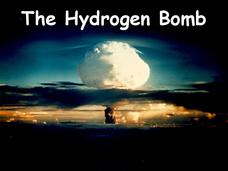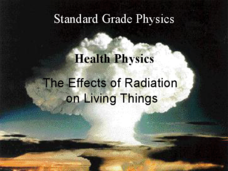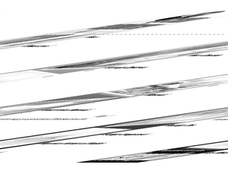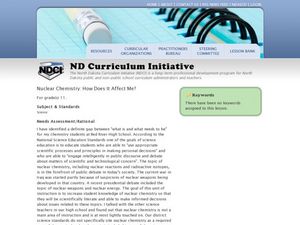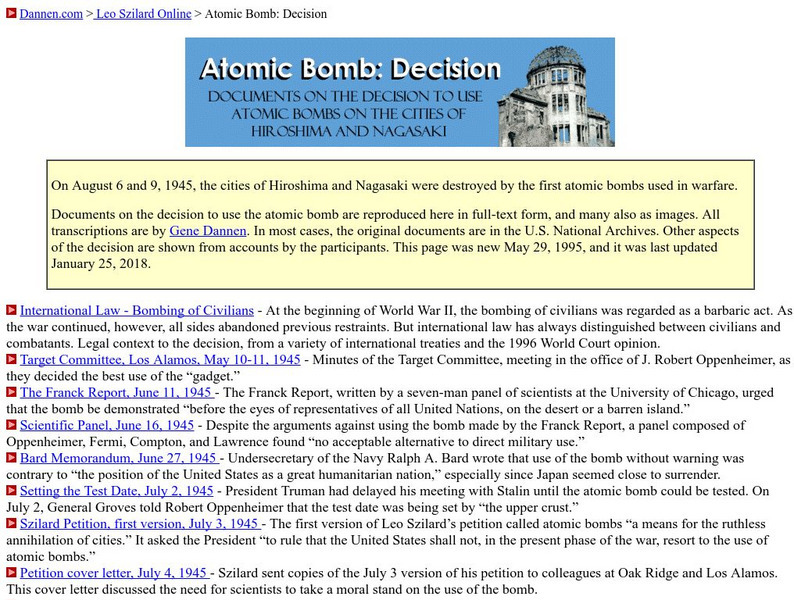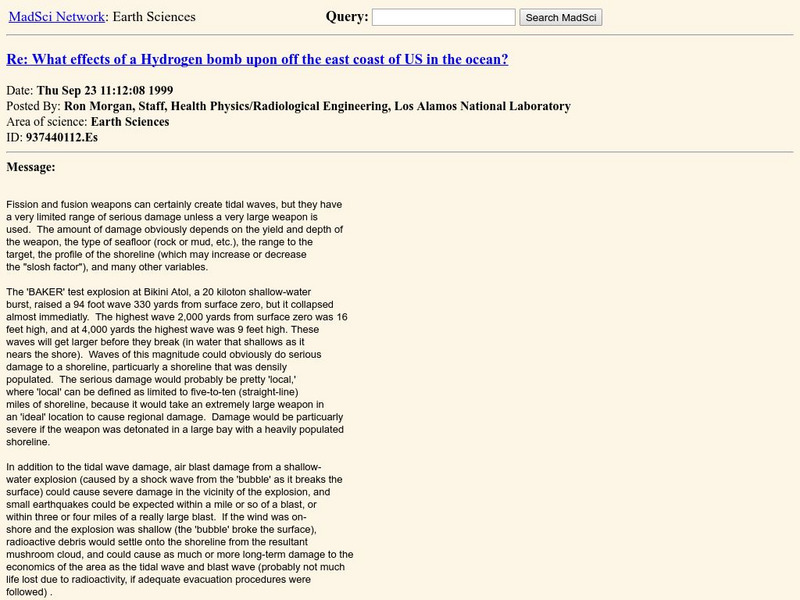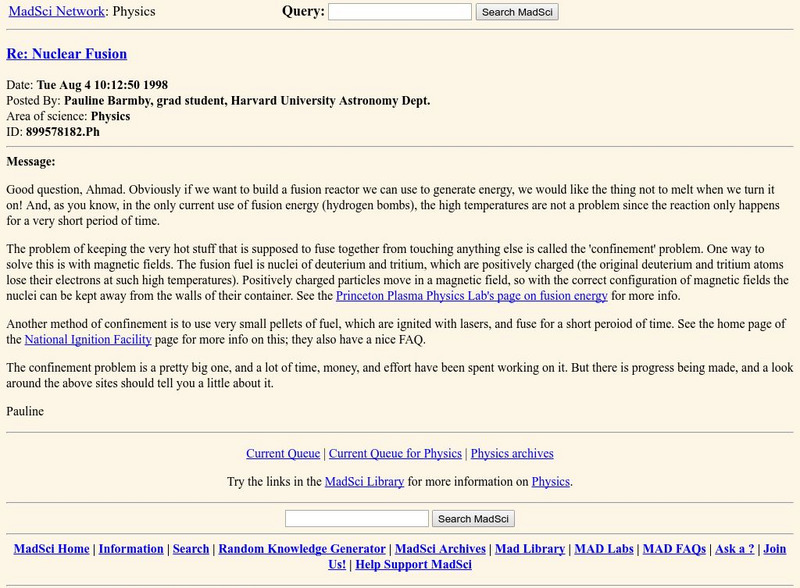Science Geek
The Hydrogen Bomb
Recycled Russian nuclear weapons provide 10 percent of the nuclear energy that the United States uses. The short presentation discusses the Teller-Ulam device. It provides a diagram of the parts as well as a description of the four...
PhET
Radioactive Dating Game
Uranium 235 has a half-life of over 700 million years and is the fuel used in the atomic bomb dropped on Hiroshima, Japan. Pupils see the half-lives and decay rates of Carbon-14 and Uranium-238. They also take measurements of these two...
Curated OER
Atomic Age Critical Thinking
High schoolers research and discuss issues surrounding the atomic bomb and the concerns it raised and the consequences of dropping the atomic bombs on Japan. A variety of sample questions are provided to engage discussion.
Curated OER
How is Atomic Energy Used Today
Students investigate energy sources by examining photographs. For this atomic energy lesson, students identify and describe various pictures and how atomic energy is used in them. Students create a presentation...
Curated OER
Nuclear Energy
Atomic theory as a philosophical study was explored even by the Ancient Greeks. The knowledge of atoms was developed in the 17th century. This PowerPoint explains how by the 1940's, splitting of the atom was discovered and since...
Curated OER
Chicago Questionnaire
High schoolers critically investigate the issues surrounding the dropping of atomic bombs on Japan. They conclude if dropping the bombs was a correct decision or not and support their conclusions with documentation. Students tie in...
Texas State Energy Conservation Office
Investigation: Splitting Atoms
In a simple activity, physical scientists model nuclear fission using a droplet of oil. This can be used alone in a unit on different types of energy, or as part of the energy conservation unit produced by the Texas State Energy...
Curated OER
Health Physics: The Effects of Radiation on Living Things
A mix of scientific details and background information about the well-known sites of radiation attacks or accidents. This topic may open up details that you may consider as sensitive, and could be upsetting to some pupils. This is a...
Curated OER
Connection to Social Studies: Linus Pauling: A Life Well Spent
In this atomic energy activity, students read about Linus Pauling, who spent years making the public aware of the dangers of nuclear weapons. They answer questions about his work and the social responsibility he took on which led to the...
Curated OER
Observing Bursts from an X-ray Burster
Learners study the use of X-ray data to make size and energy estimates of the source and the processes occurring there. They use XTE observations of the object GRO 1744-28 to determine whether bursts occur periodically and the duration...
Curated OER
Will the Lights Go Out?
Students diagram nuclear power plant, describe process for generating electrical power, discuss nuclear disasters in the 20th century, and draw conclusion about value of nuclear power for the future.
Curated OER
The Tell-Tale Plume
Students examine hydrothermal vents. In this ocean lesson, students identify changes in physical and chemical properties of sea water caused by hydrothermal vents.
Curated OER
Nuclear Chemistry: How Does It Affect Me?
Eleventh graders study the different areas of nuclear chemistry. In this energy and critical thinking lesson plan students study radiation, nuclear energy and weapons then divide into groups and create a poster.
PBS
Pbs Learning Media: Primary Source Set: The Atomic Bomb and the Nuclear Age
A collection that uses primary sources to explore the Atomic Bomb and the Nuclear Age it started.
Science Struck
Science Struck: History of the Atomic Bomb
Describes the history of the invention of the atomic bomb, its use in World War II against Japan, the impact on people who were targetted by it, the immediate and long-term impact on generations of people, the effect on communications,...
Other
Atomic Bomb: Decision
An indexing page which links to several pages of letters, diary excerpts, public reports, and personal correspondence relating to the use of the first atomic bomb. Includes letters and petitions drafted by scientists involved with the...
MadSci Network
Msn: What Are the Effects of a Hydrogen Bomb?
From the Mad Scientist Network web site. Using a question and answer format, this page describes some potential effects of a nuclear explosion. The possibilities of tidal waves, earthquakes and radiation-related damages are discussed.
American Academy of Achievement
Academy of Achievement: Glenn T. Seaborg, ph.d.
A biography of Glenn Theodore Seaborg. He discovered the plutonium that was used in America's atomic bomb in World War II. He made many other important discoveries, but also worked for decades to promote nuclear disarmament and the safe...
Atomic Archive
Nuclear Fusion: The Hydrogen Bomb
From the Atomic Archive - the online companion to the award-winning CD-ROM. This page (and the couple that follow from it) describe the use of fusion reactions in a hydrogen bomb. A schematic diagram of an H-bomb is given and discussed....
My Hero Project
My Hero: Madame Curie
Use this site to learn about Marie Curie's scientific discoveries in radiation, which resulted in the creation of both modern cancer treatments and the atomic bomb.
MadSci Network
The Mad Scientist Network: About Nuclear Fusion
Using a question and answer format, this page introduces and explains the idea of nuclear fusion. The hydrogen bomb and its operation is discussed. Other applications of nuclear fusion are described. Short but clear.
MadSci Network
The Mad Scientist Network: About Nuclear Fusion
Using a question and answer format, this page introduces and explains the idea of nuclear fusion. The hydrogen bomb and its operation is discussed. Other applications of nuclear fusion are described. Short but clear.
Mocomi & Anibrain Digital Technologies
Mocomi: Albert Einstein Biography
Useful biographical information, inventions, and interesting facts about German-born physicist, Albert Einstein, known for developing the theory of relativity.
